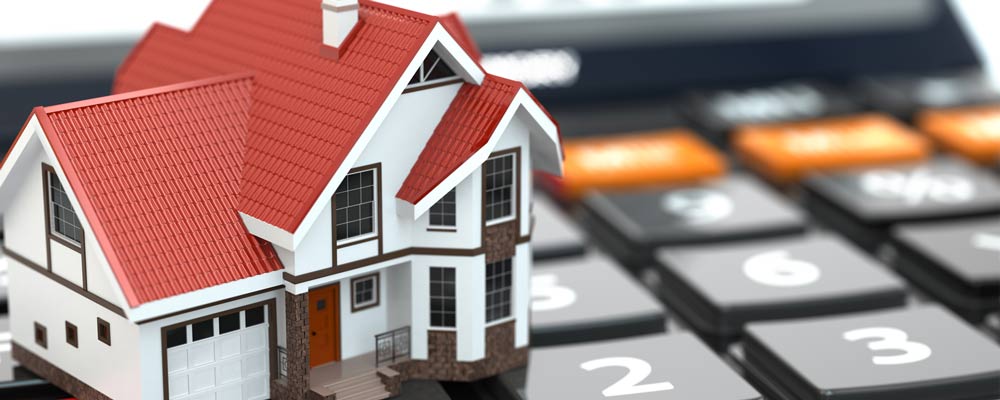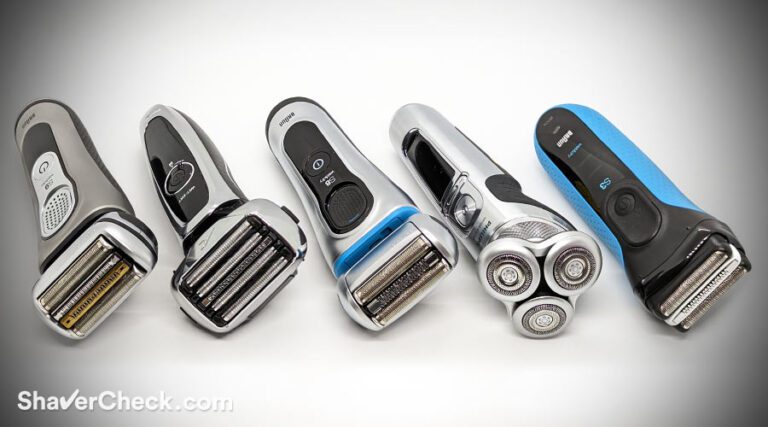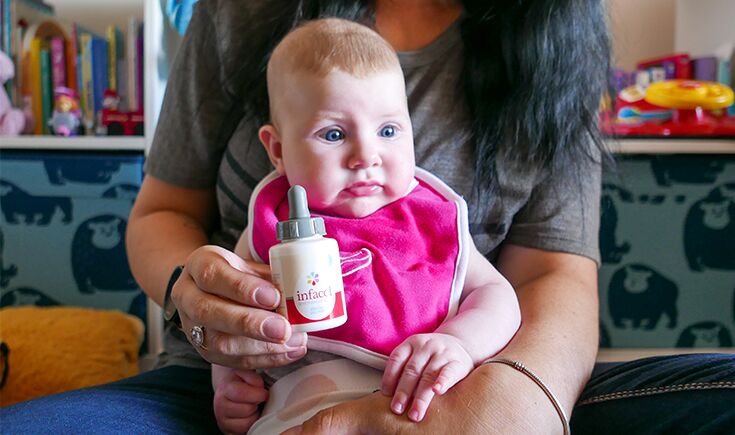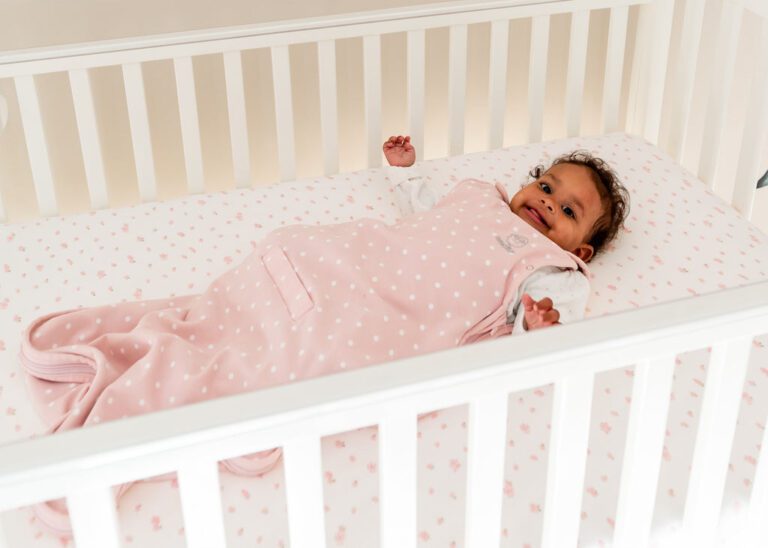How to Measure Baby Formula: A Step-by-Step Guide
To measure baby formula accurately, use a measuring cup to add cold water to the bottle first instead of relying on the bottle markings. Then, use the scoop provided with the formula can to measure the powder.
Fill the scoop loosely and remove excess powder with a knife.
Understanding The Importance Of Accurate Measurement
Accurately measuring baby formula is crucial for ensuring proper nutrition for your little one. Use a measuring cup to add cold water to the bottle first, then measure the powder using the scoop that comes with the can of formula.
It’s important to follow these steps to ensure your baby gets the right amount of formula.
The Significance Of Measuring Baby Formula Precisely
Accurate measurement of baby formula plays a crucial role in ensuring the well-being and proper development of your little one. As a parent, it is essential to understand the importance of measuring baby formula accurately to meet your baby’s nutritional needs. Incorrect measurements can lead to underfeeding or overfeeding, resulting in various health issues such as inadequate growth, digestive problems, and nutritional imbalances.
Why Accuracy Is Crucial For Baby’s Health And Development
Precise measurement of baby formula is vital for your baby’s health and development. Here’s why:
- Proper Nutrition: Accurate measurement ensures your baby receives the right balance of nutrients needed for growth and development.
- Weight Management: Overfeeding or underfeeding can lead to weight problems in infants, making it crucial to measure formula precisely.
- Digestive Comfort: Accurate measurements help prevent digestive issues such as constipation, gas, and reflux, which can be caused by incorrect ratios of water and formula.
- Hydration: Measuring formula accurately ensures your baby stays adequately hydrated, especially during hot weather or illness.
- Prevention of Nutritional Deficiencies: Precise measurement guarantees your baby receives the correct amount of vitamins, minerals, and other essential nutrients.
To ensure your baby’s optimal health and development, it is essential to measure baby formula accurately. Now that we understand the significance and benefits of precise measurement, let’s explore how to measure baby formula correctly.
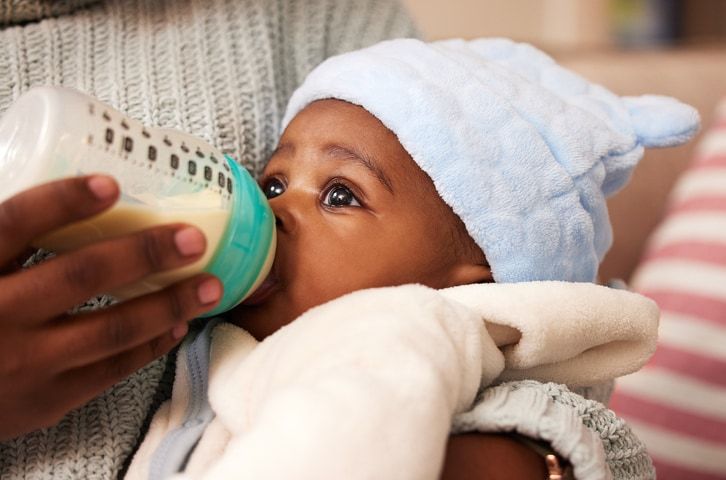
Credit: www.care.com
Gathering The Necessary Tools
Gathering the necessary tools for measuring baby formula is essential to ensure accurate preparation. Use a measuring cup to add cold water to the bottle and the provided scoop to measure the powder. Be sure to scrape off any excess powder for precise measurements.
Essential Items For Measuring Baby Formula
When it comes to measuring baby formula accurately, having the right tools is crucial. Here are the essential items you’ll need:
- A measuring cup – using a measuring cup ensures precision in measuring the water for the formula. It is more accurate than relying on the markings on the bottle itself.
- A formula scoop – the formula scoop, typically provided with the can of formula, is designed to measure the correct amount of powdered formula.
- A knife – a flat-sided knife helps in scraping off any excess powdered formula from the scoop for accurate measurements.
Ensuring Cleanliness And Hygiene Of The Tools
To ensure the safety and hygiene of your baby, it is essential to keep the tools clean. Here are some steps to follow:
- Always wash your hands thoroughly with soap and water before handling the tools.
- Wash the measuring cup, formula scoop, and knife with hot soapy water after each use. Rinse them thoroughly to remove any residue.
- Dry the tools with a clean and dry cloth or allow them to air dry completely before storing them.
- Store the tools in a clean and dry location, preferably in a covered container to protect them from dust and contamination.
By maintaining cleanliness and hygiene, you can minimize the risk of introducing harmful bacteria into your baby’s formula.
Step 1: Measuring The Water
To measure baby formula, use a measuring cup to add cold water to the bottle first, then measure the powder using the scoop that comes with the can of formula. Fill the scoop and scrape off the excess powder with a knife.
This ensures accuracy in measurement.
When it comes to preparing baby formula, accurate measurements are essential. In this step, we will focus on measuring the water accurately before adding the formula powder. By following these steps, you can ensure your baby receives the right amount of liquid nutrition.
Using A Measuring Cup To Add Cold Water
The first and most crucial step in measuring water for baby formula is using a measuring cup. Using a measuring cup to add cold water is more accurate than relying on the markings on the bottle. This way, you can measure the exact amount of water required, ensuring the formula’s consistency remains consistent and your baby gets the right nutrition.
Here’s how you can measure the water using a measuring cup:
- Start by filling the measuring cup with cold water. Make sure it is at room temperature and filtered if possible.
- Hold the measuring cup at eye level to ensure accurate measurement.
- Add the water to the baby bottle, carefully pouring it in without any spills or splashes.
- Check the measurement on the cup to ensure you have added the correct amount of water according to the formula instructions.
Using a measuring cup eliminates any guesswork and helps you achieve precise measurements, giving you peace of mind that your baby is getting the right amount of liquid nutrition.
Importance Of Using Accurate Measurements
Accurate measurements are crucial when it comes to preparing baby formula. Proper measurement ensures the correct concentration of nutrients, providing your baby with the required nourishment for healthy growth and development.
Here are a few reasons why using accurate measurements is important:
- Nutritional Balance: Accurate measurements help maintain the right balance of water and formula powder, ensuring your baby receives the correct amount of carbohydrates, proteins, and fats.
- Digestive Health: Properly mixed formula with accurate measurements helps prevent digestive issues such as constipation, diarrhea, and gas.
- Growth and Development: Each scoop of formula powder should be mixed with the right amount of water to provide the necessary calories for your baby’s growth and development.
By using precise measurements, you can avoid underfeeding or overfeeding your baby, promoting their overall well-being and healthy development.
Step 2: Measuring The Formula
In order to measure baby formula accurately, it is recommended to use a measuring cup instead of relying on the markings on the bottle. Fill the scoop with the powder and then level it off with a knife for an exact measurement.
Utilizing The Scoop Provided With The Formula Can
When it comes to measuring baby formula, it is important to follow the instructions provided on the packaging to ensure that your baby receives the right amount of nutrition. In this step, we will discuss how to properly fill the scoop and level off the excess to measure the formula accurately.
How To Properly Fill The Scoop And Level Off The Excess
Measuring the formula accurately is crucial to meet your baby’s nutritional needs. Here’s a step-by-step guide on how to properly fill the scoop and level off the excess:
- Start by grabbing the scoop that comes with the can of formula. It is essential to use the manufacturer-provided scoop for accurate measurement.
- Before using the scoop, ensure that it is clean and dry to prevent any contamination.
- Gently insert the scoop into the can of formula powder. Make sure to avoid packing the powder too tightly in the scoop as it may result in an inaccurate measurement. A loosely filled scoop is ideal.
- Once the scoop is full, use the backside of a knife or your finger to level off the excess powder. Simply swipe the knife or finger across the top of the scoop, removing any excess formula.
- Be cautious not to tap or shake the scoop to level off the powder, as this can lead to an inconsistent measurement.
- Dispose of the excess formula properly, as storing it back in the can may introduce moisture and compromise its quality.
By properly filling the scoop and leveling off the excess, you can ensure that you are measuring the baby formula accurately. This ensures your little one receives the right amount of nutrients for their growth and development.
Step 3: Mixing The Formula
Once you have measured the correct amount of baby formula, it’s time to mix it with water. This step is crucial in ensuring that your little one gets the right nutrition. Follow these techniques for achieving a well-mixed solution.
Adding The Measured Formula To Water
The first step in mixing baby formula is to measure the water accurately. While the markings on the bottle may seem convenient, using a measuring cup is more accurate. This ensures that the water-to-formula ratio is perfect for your baby’s needs.
Techniques For Achieving A Well-mixed Solution
Once you have measured the water, it’s time to add the formula. Most baby formulas come with a scoop that is specifically designed to measure the right amount. Fill the scoop loosely and level off the excess powder with the flat side of a knife. This helps ensure that you are not under or overfeeding your little one.
After measuring the formula, add it to the pre-measured water. Make sure to follow the manufacturer’s instructions on the correct ratio of water to formula. Once both the water and formula are in the bottle, it’s time to shake vigorously. This helps in achieving a well-mixed solution, ensuring that every sip your baby takes is perfectly balanced.
If you prefer, you can mix a full day’s worth of formula and refrigerate it. However, it is important to note that prepared formula should not be kept for more than 24 hours. Always discard any unused formula after that time to ensure your baby’s safety.
By following these simple steps and techniques, you can ensure that your baby gets the correct nutrition and stays healthy and happy.
Additional Tips For Accurate Measurement
To ensure accurate measurement of baby formula, use a measuring cup to add cold water to the bottle first instead of relying on the markings on the bottle. Use the scoop provided with the formula can to measure the powder, filling it loosely and scraping off excess powder with a knife.
Dealing With Different Formula Types
When it comes to measuring baby formula accurately, it’s important to understand the differences between the various types of formula available. Whether you’re using powder, liquid, or concentrate formula, each type requires a specific approach for accurate measurement.
For powdered formula, start by using a clean, dry measuring scoop that comes with the formula can. When measuring, fill the scoop loosely and level off the excess powder using the flat side of a knife. Avoid packing the powder tightly as this can lead to incorrect measurements.
If you’re using liquid formula, it typically comes in ready-to-feed bottles or cartons. In this case, you don’t need to measure anything as the formula is pre-measured and ready to use.
Concentrate formula, on the other hand, needs to be mixed with water before use. Follow the instructions on the packaging carefully to ensure accurate measurement. Usually, it requires diluting one part concentrate with a specific amount of water.
Adapting Measurements As Per The Baby’s Age And Nutritional Needs
It’s essential to adapt the measurements of baby formula as per your baby’s age and nutritional needs. As babies grow, their nutritional requirements change, and it’s important to adjust the amount of formula accordingly.
Initially, newborn babies typically consume smaller amounts of formula, such as 2-3 ounces per feeding. As they grow, this amount gradually increases. By around four to six months, most babies consume around 6-8 ounces of formula per feeding, although this can vary.
Consult your pediatrician or follow the guidelines provided on the formula packaging to determine the appropriate amount of formula based on your baby’s age and weight.
It’s also important to note that babies who consume more formula might require fewer feedings throughout the day, while those who consume smaller amounts may need more frequent feedings. Pay attention to your baby’s cues and appetite to ensure they are receiving the right amount of formula.
By understanding how to adapt measurements based on your baby’s age and nutritional needs, you can ensure they receive the right amount of formula for optimal growth and development.
Frequently Asked Questions For How To Measure Baby Formula
How Do You Measure Infant Formula?
To measure infant formula accurately, use a measuring cup to add cold water to the bottle first. Then, use the scoop provided with the formula can to measure the powder. Fill the scoop loosely and scrape off the excess powder with a knife.
How Do You Calculate Formula For A Baby?
To calculate formula for a baby, use a measuring cup to add cold water to the bottle first. Then, measure the powder using the scoop provided with the can of formula. Fill the scoop and scrape off the excess powder with the flat side of a knife.
Add the measured powder to the water and shake vigorously. You can mix one bottle at a time or a full day’s worth and refrigerate it.
What Is The Measurement Of One Scoop Of Baby Formula?
One scoop of baby formula is the measurement recommended on the formula can. It should be packed loosely and any excess powder should be removed.
How Many Scoops Of Formula Is 4oz?
To make 4 oz of formula, use the scoop that comes with the can and fill it loosely. Scrape off the excess powder with a knife.
Conclusion
To measure baby formula accurately, it is best to use a measuring cup rather than relying on bottle markings. The scoop that comes with the formula should be filled loosely with powder and excess powder should be scraped off. It is important to mix the powder with pre-measured water and shake vigorously for consistency.
If you misplace the scoop, a measuring spoon can be used as an alternative. Remember, following these measurement guidelines ensures your baby is getting the correct amount of nutrition. Maintaining accurate measurements is essential for your baby’s health and well-being.


